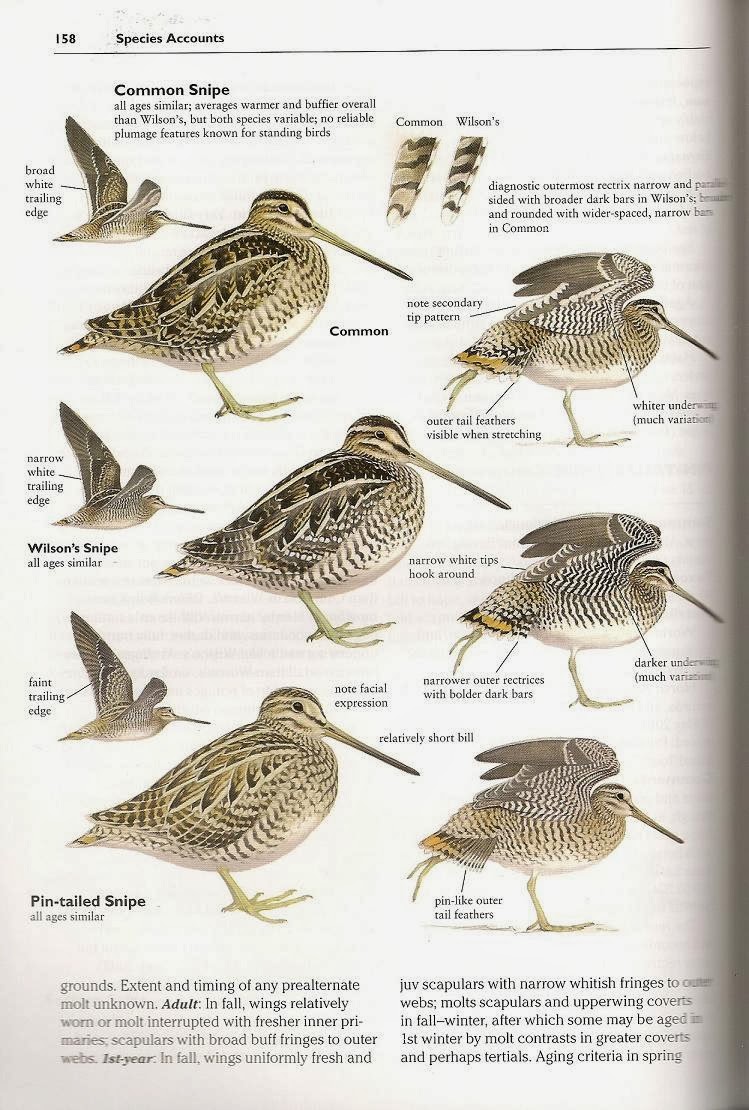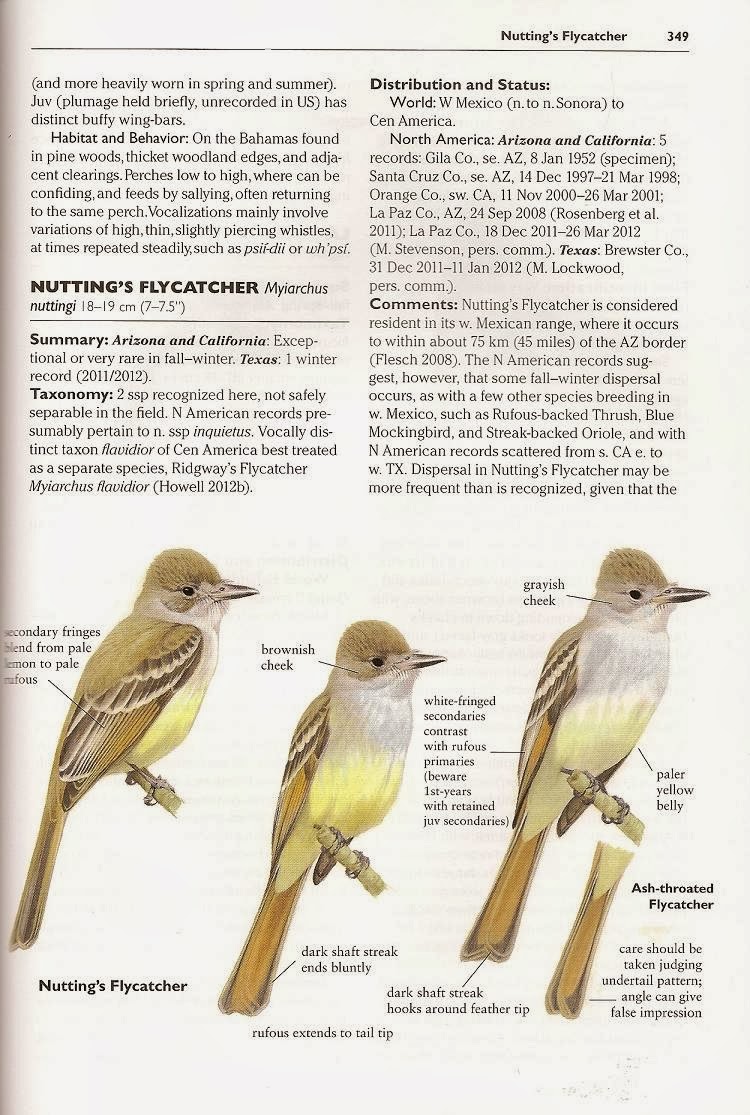(3294)
Woodpeckers of the World: A
Photographic Guide
by Gorman, Gerard
2014, 528pp, ISBN: 9781408147153
THE BASICS: hardcover; covers all 239
species of woodpeckers in the world; 722 good color photographs show all but
five of the species; this is a photographic and natural history guide but not
purely an identification guide; text on each bird addresses description,
status, habitat, range, food & foraging, vocalizations, drumming, and taxonomy;
a large range map for each bird shows the general distribution across the region
 THE REVIEW: This is an attractive
book where the highlight of its contents is the collection of 722 color
photographs that make up this thick book.
This is the first photographic book to address all 239 species of
woodpeckers in the world. However, it
should be pointed out that 5 species are not shown (Rusty-necked Piculet,
Yellow-faced Flameback, and the Atlantic, Ivory-billed, and Imperial
Woodpeckers).
THE REVIEW: This is an attractive
book where the highlight of its contents is the collection of 722 color
photographs that make up this thick book.
This is the first photographic book to address all 239 species of
woodpeckers in the world. However, it
should be pointed out that 5 species are not shown (Rusty-necked Piculet,
Yellow-faced Flameback, and the Atlantic, Ivory-billed, and Imperial
Woodpeckers). The book is arranged into
"chapters" with one chapter focusing on a Genus. It was a nice artistic touch to start each
chapter with a full page, impressive photo of one member of that Genus. There are many spectacular photographs
throughout the chapters, such as the Okinawa and Crimson-crested
Woodpeckers. Except for five species
with only one photo, all the others are shown with 2-5 photographs which depict
both the male and female when differences occur. Only a few of the birds have photos that show
the various subspecies. Hopefully, this
book will drive further photography of some of the lesser known birds. Although most of the photos are good, a few
species (e.g., Balem, Red-collared, and Southern Sooty Woodpeckers) need
improved photographs.
The book is arranged into
"chapters" with one chapter focusing on a Genus. It was a nice artistic touch to start each
chapter with a full page, impressive photo of one member of that Genus. There are many spectacular photographs
throughout the chapters, such as the Okinawa and Crimson-crested
Woodpeckers. Except for five species
with only one photo, all the others are shown with 2-5 photographs which depict
both the male and female when differences occur. Only a few of the birds have photos that show
the various subspecies. Hopefully, this
book will drive further photography of some of the lesser known birds. Although most of the photos are good, a few
species (e.g., Balem, Red-collared, and Southern Sooty Woodpeckers) need
improved photographs. A medium-sized to large range map
accompanies each bird. For those species
that migrate, a 3-color system is used to denote summer, winter, and
resident. The maps do a good job of
showing the general ranges of the bird in the region. However, the maps show only the outlines of
the continents and not of any of the countries.
Consequently, the range of some birds such as the Rusty-necked Piculet
or the Strickland's Woodpecker is a little vague if you are trying to find out
exactly where this bird can be found. On
the flip side for islands such as The Philippines, Indonesia, or Sri Lanka,
many of the maps do zoom on the specific area of where the bird is located.
A medium-sized to large range map
accompanies each bird. For those species
that migrate, a 3-color system is used to denote summer, winter, and
resident. The maps do a good job of
showing the general ranges of the bird in the region. However, the maps show only the outlines of
the continents and not of any of the countries.
Consequently, the range of some birds such as the Rusty-necked Piculet
or the Strickland's Woodpecker is a little vague if you are trying to find out
exactly where this bird can be found. On
the flip side for islands such as The Philippines, Indonesia, or Sri Lanka,
many of the maps do zoom on the specific area of where the bird is located.
Each of the 239 species receives
between one-half and a full page of text.
The topics given for most birds include the following: Identification,
Vocalizations, Drumming, Status, Habitat, Range, Taxonomy, Similar Species (for
some birds), and Food & Foraging. The
longer sections tend to be Identification, Vocalizations, and Taxonomy.
 The Identification section might be
more aptly named "Description".
This material describes the bird in good detail; however, this
description often does not identify or separate the bird from another
woodpecker since multiple birds can often share some of the same
descriptions. To help distinguish one
species from another, the section on Similar Species is used for some of the
birds and contains brief, additional notes on the identifying characteristics.
The Identification section might be
more aptly named "Description".
This material describes the bird in good detail; however, this
description often does not identify or separate the bird from another
woodpecker since multiple birds can often share some of the same
descriptions. To help distinguish one
species from another, the section on Similar Species is used for some of the
birds and contains brief, additional notes on the identifying characteristics.
The author has done a good job on the
Vocalizations section, sometimes offering a full paragraph to describe the
variety of calls the species might make.
The descriptions use both effective adjectives in tandem with written
patterns such as "fast, loud, staccato kuk-ki-ki-ki-ki-ke-ku-kuk" or
"chattering yeh-yeh-yeh and weaker wiii notes".
 I appreciate the additional section
on Taxonomy and Variation given for many of the birds. This section provides a quick review on the
several subspecies that may be involved, comments on being part of a
superspecies, and, briefly describes some of the plumage variations.
I appreciate the additional section
on Taxonomy and Variation given for many of the birds. This section provides a quick review on the
several subspecies that may be involved, comments on being part of a
superspecies, and, briefly describes some of the plumage variations.
This book is a photographic guide and
can be used to help learn and maybe even identify most of the woodpeckers. However, for anyone wondering how to use this
book, I would not call it an identification guide. The photos are good but do not show all the
plumage variations; and, the text is geared towards giving an overall natural
history account for the bird aided with detailed descriptions. Regardless, this is great book to have since
it is the only photographic guide to include all woodpecker species on the
planet and is replete with great photography. -- (written by Jack at Avian
Review with sample pages, July 2014)








































